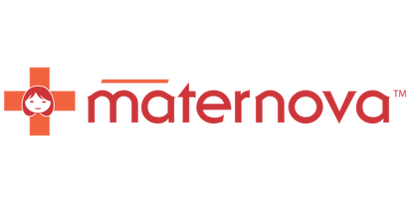Add description, images, menus and links to your mega menu
A column with no settings can be used as a spacer
Link to your collections, sales and even external links
Add up to five columns
Add description, images, menus and links to your mega menu
A column with no settings can be used as a spacer
Link to your collections, sales and even external links
Add up to five columns
Single Serve Safety for Newborns to Reduce HIV Transmission: Pratt Pouch, Part 2
October 29, 2016 3 min read
#### Who developed these pouches?
Robert Malkin and the engineers at the Developing World Healthcare Technology Laboratory at Duke University’s Pratt School of Engineering saw a need and sought to find a medically effective, simple and cost effective solution to an ongoing dilemma in the fight against HIV. Ironically, the class originally set out to look at failure (why ARV dosing devices were failing) and they ended up creating a solution
#### What so difficult in giving ART to newborns?
It is well known that giving newborns antiretrovirals in the first 24 to 72 hours drastically decreases the transmission of HIV from the mother to baby but the means to do so in areas most in need is prohibitive on two fronts. In areas most in need, more than half of the mothers deliver at home with little access to a clinic or community health workers. The only way to ensure that the baby gets these lifesaving drugs is to give them to the mother to store before delivery (sometimes months before delivery) with easy to follow instructions and adequate shelf-life. Other delivery methods, including a pre-measured syringe in a sealed foil pack, have been tried in the past with unsatisfactory results.
#### Laboratory testing of the Pratt Pouch’s design and stability of medication
The Pratt Pouch was laboratory tested with huge success. The foilized polyethylene pouches were filled with a suspension of Nevirapine (NVP) and exposed to a variety of conditions simulating the weather in Africa, 25-40˚C (77-104˚F) and high relative humidity. The preservative in the suspension degraded initially as it was exposed to light and oxygen during the pouch-filling process. Once sealed, the pouches were tested every two months with minimal further degradation of the preservative and minimal decrease in concentration of NVP (maximum 1.4%). Almost no moisture was lost in the packs (0.7%) over 12 months.
#### Field testing of the Pratt Pouch preparation in Tanzania
Once the pouches proved to be effective in a laboratory setting it was time to determine if pouches could be filled locally by trained local pharmacists. The site of the study was the KCMC hospital in Moshi, Tanzania, a large hospital serves the people of Eastern Tanzania.
A pharmacist at the KCMC hospital was trained and then filled and sealed 60 pouches. The pouches were tested for volume accuracy and mechanical strength (burst and leakage) before they were tested over time for stability of the drugs and preservative. The study expanded in two other ways: pouches from two different manufacturers were filled with different antiretrovirals (AZT and NVP) and stored in a variety of conditions similar to the lab testing back in the US. The results were close to the results achieved in the US with minimal moisture loss, minimal drug concentration change and minimal preservative loss.
#### Finally, would local Tanzanian mothers be able to work with the pouches?
Sixty-one HIV+ mothers were given pouches with only picture instructions. They were able to tear the pouches and empty the contents into plastic cups of approximately the same size and shape of an infant’s mouth. The Pratt Pouch method enabled the mothers to get 90% of the medication into the ‘mouth’.
#### But, why aren’t these pouches just filled in centrally?
If they were, it would be considered a manufacturing step in the US and most countries. As a manufacture, the pouches size and contents of the pouch, and its labeling, would require FDA approval for each variant as protocols, medications and baby weights changed. However, when filled and sealed by a local pharmacist, the pouch is simply a pill bottle for liquid medications, dramatically lowering the cost of regulatory approval. This leaves flexibility for specific dosing and drug therapies.
Leave a comment
Comments will be approved before showing up.
Also in The Maternova Blog
Pumani bubble CPAP
November 11, 2025 1 min read
The Pumani bubble CPAP was engineered by a team at Rice University in Texas, working in collaboration with clinicians in Malawi. A range of specific design considerations made the Pumani especially appropriate for low-resource settings so that parts are easy to replace.
The MaternaWell Tray for PPH estimation now appears in key obstetric guidelines
October 30, 2025 1 min read
A 'tray' is now mentioned in the FIGO/WHO/ICM Consolidated Postpartum Hemorrhage Guidelines published by in 2025, expanding the type of monitoring device from drape to drape or tray.
Is it ethical to separate mother and infant just after birth?
October 28, 2025 2 min read
Immediate skin to skin care means less than ten minutes after the infant takes its first breath, the infant, naked except for a diaper, spends at least one hour on the mother’s chest, against her skin. It is recommended that preterm and low birth weight kangaroo care involve prolonging contact beyond the first hour for at least 8 hours per day or as long as possible (up to 24 hours) per day

